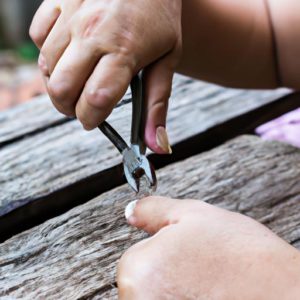Table of Contents
Introduction
If you’re embarking on a remodeling project that involves removing old cabinets, you may come across a situation where the cabinets were built in place using nails instead of screws. In such cases, you won’t be able to salvage the cabinets for reuse. Once you remove them, you’ll be left with a pile of individual pieces. In this article, we’ll guide you through the process of removing these cabinets and offer some tips along the way.
Tools Needed
Before we dive into the steps, gather the following tools to ensure a smooth removal process:
- Hammer
- Small Single-Handed Sledge Hammer
- Pry-bar
- Gloves
- Safety Goggles
- Razor Knife
- Reciprocating Saw
- Jig Saw
- Power Saw
- Assorted Screwdrivers
Steps for Removing Old Cabinets
Now that you have your tools ready, here are the steps you should follow to remove the old cabinets:
-
Shut off the water and power: Before you begin, make sure to turn off the water supply to the sink faucet and the power supply to any appliances connected to the cabinets, such as the range, dishwasher, hood vent, or microwave.
-
Detach the sink and appliances: Start by removing the sink and all the appliances. Note that cast-iron sinks tend to be quite heavy, so it’s best to have someone assist you with their removal.
-
Handle walls with care: When removing cabinets, be cautious not to pry too hard against the walls, as they may be made of delicate materials like drywall or plaster. Instead, focus on pulling things away from the walls rather than prying against them.
-
Cut caulking: Use a razor knife to cut through any caulk lines connecting the cabinets and countertops to the walls, floors, or ceilings.
-
Divide larger sections: Put on your safety glasses and cut large sections of the Formica countertop, oversized base cabinet bottoms, face-frames, and toe sections into smaller pieces. You can use a saw that you’re comfortable with for this task.
-
Remove backsplashes: If the backsplashes are 3/4″ thick or thinner, they’re likely glued to the wall using liquid nail. Insert a putty knife between the wall and splash, then use a hammer to gently force it downward until it loosens from the wall. For thicker splashes, they are probably attached to the countertop, so no need to wedge the putty knife behind them.
-
Lift the countertop: Put on gloves and safety glasses, then start by hammering the countertop upwards. Once it starts to loosen, use the pry-bar to lift it higher. Finally, with both hands, pull it off the cabinet. You might hear the squeaking sound of the nails coming off!
-
Remove drawers: Take out all the drawers from their respective places.
-
Disassemble the cabinetry: Using a combination of a hammer and sledgehammer, start by banging on the finished ends, then on the face-frames, followed by prying on the bottoms, and finally, removing the backs. By following this pattern, the cabinets should come apart relatively easily. If you encounter any stubborn sections, cut them into smaller pieces. These old kitchens were often constructed using pine and plywood, and they were also glued together, which can make them resistant to disassembly.
Remember to keep an eye out for unexpected surprises during this process, such as roaches or even old newspaper articles from decades past. Adding a touch of fun to the project never hurts!
Make the Process Easier
To make the removal process smoother, we recommend cutting as many pieces as possible into smaller sections before ripping them out. This will make it easier to dispose of the parts and transport them to your trash containers.
Be Prepared for Repairs
When removing old kitchen cabinets, it’s common to come across areas that require replacement or repair. Water damage and mold growth are not uncommon, and you might even uncover old ceiling leaks. In addition to budgeting for new cabinets, set aside some extra funds for any unexpected repairs that may arise.
Removing old cabinets can be a challenging task, but with the right tools and a systematic approach, you’ll be able to tackle it successfully. So roll up your sleeves, grab your tools, and get ready to transform your space!







